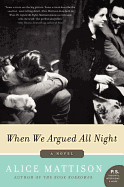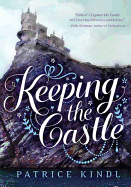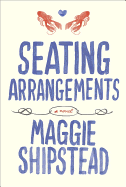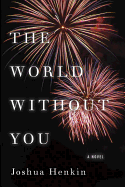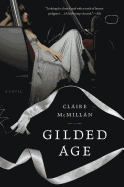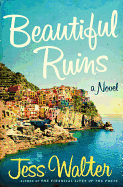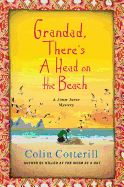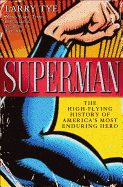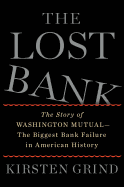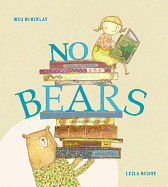Week of
Last week in writing about the annual BookExpo America, I mentioned discovering trends for the fall. A never-ending trend is fabulous fiction; there's so much to write about, it will take several columns (with a few late August titles we just had to add). Start your wish list....
The Orchardist by Amanda Coplin (HarperCollins, August 21) At the turn of the 20th century, in the foothills of the Cascades, an orchard caretaker finds himself also caring for two very young and pregnant teens. Talmadge lives a lonely, ordered life but opens his heart, letting in the world with all its love, violence, beauty and tragedy.
One Last Thing Before I Go by Jonathan Tropper (Dutton, August 21) Drew Silver's ex-wife is getting married, his teenage daughter is pregnant, and he needs lifesaving heart surgery, but decides to forgo it in favor of repairing relationships and becoming a better man. Tropper is always hilarious, always heartbreaking.
Wilderness by Lance Weller (Bloomsbury USA, September 4) Thirty years after the Civil War, Abel Truman has found his way to the rugged, majestic coast of Washington State, where he lives alone in a driftwood shack with his beloved dog. An old and ailing man, he must undertake an heroic final journey over the snowbound Olympic Mountains. His life is touched by the daughter of murdered Chinese immigrants, whom he saves, and an escaped slave who nurses him back to life.
NW by Zadie Smith (Penguin Press, September 4) The lives of four Londoners, all from the same city housing estate, who have made it out with varying degrees of success. And then one afternoon, a stranger knocks on a door....
This Is How You Lose Her by Junot Diaz (Riverhead, September 11) Stories about how love ends. Say no more--it's Junot Diaz. --Marilyn Dahl, reviews editor, Shelf Awareness
Seating Arrangements
by Maggie Shipstead
One would expect a seven-months-pregnant bride might be the most flagrant no-no at the wedding joining two upscale East Coast families, but shenanigans spill forth like lobsters from their pots in Maggie Shipstead's Seating Arrangements.
In this debut novel, the details fall to good-humored and stoic Biddy Van Meter, mother of the bride. Winn, the father of the bride, arrives at his island summer home to be outnumbered by women seven-to-one ("Makeup pencils and brushes were everywhere, abandoned helter-skelter as though by the fleeing beauticians of Pompeii") with a premonition the weekend will become "a treacherous puzzle, full of opportunities for the wrong thing to be said or done."
Winn fulfills his own prophecy. Lurking among the flock of bridesmaids is Agatha, who earnestly continues an earlier flirtation with Winn, while he indulges his brooding analysis of a longstanding social snub by the local golf club. Meanwhile, Livia, the sister of the bride, mourns her recent break-up with the son of another island family. Add Aunt Cecelia the martini mixer, Sterling the rapscallion groomsman and an assortment of other sassy, smarmy and sometimes sympathetic characters who'd fit in perfectly in a Richard Russo or Elinor Lipman novel, and the liaisons, near-trysts and romantic memories abound.
Send your regrets to any summer invitations and stay in with Maggie Shipstead's entertaining novel, a guaranteed good time. --Cheryl Krocker McKeon, bookseller
Discover: A debut novel plunges readers into a rollicking wedding weekend one bridesmaid describes as "a pagan rite fueled by proximity to love and optimism and free booze."
Invisible Monsters Remix
by Chuck Palahniuk
More than a rerelease and yet less than a rewrite, this "remix" of Chuck Palahniuk's 1999 novel Invisible Monsters would seem, in theory, to be the kind of artistic onanism that gives us unnecessary "director's cuts" of movies. But reading Remix is a welcome opportunity both to examine how Palahniuk's trademark mix of pathos and blasphemy developed during his hungry years and penetrate the cloud of cult-fame and outrageousness that exists under his work's transgressive veneer.
Palahniuk states in the preface that Invisible Monsters was inspired by old Vogue magazines ("continued on page X") lying around the laundromat he frequented; here he's shuffled the chapters in a "jump to chapter X" scavenger hunt that he says was his original intent. The bones of the original story remain the same: a fashion model suffers a face-destroying accident and takes to the road with an artificially stunning fellow traveler in a quest for stolen prescription drugs and self-worth. As usual in a Palahniuk novel, no one is who they appear to be under their high fashion and support garments, and a sick society debases all who subscribe to its dictates.
Deconstructing the chapter order is a little gimmicky and doesn't much change the way the story reads. What does change Invisible Monsters in its remixed version is several long passages embedded into the "jump to" format that recount moments of Palahniuk's real life. Subtly moving, this singular writer reminds us that real life is often just as tragic, absurd and fabulously perverse as a Palahniuk novel. --Cherie Ann Parker, freelance journalist and book critic
Discover: Palaniuk shuffles the chapters and adds context to one of his earliest novels about fashion models and the ugly and unreal nature of what a sick society considers beautiful.
The World Without You
by Joshua Henkin
In Joshua Henkin's (Matrimony) The World Without You, the Frankel family gathers at their home in the Berkshires on Fourth of July weekend in 2005. Leo Frankel, a journalist and adventurer, was killed in Iraq one year ago and this mostly nonobservant Jewish family is now ready to unveil his tombstone.
The eldest sister, Clarissa, is 39 and has decided that she wants to have a baby. Lily, a hot-tempered liberal D.C. lawyer, has initially arrived without Malcolm, her boyfriend, a restaurateur looking for financing for his own restaurant.
The youngest girl, Noelle, has become an Orthodox Jew and moved to Israel, where she's rearing four boys with her husband, the feckless, terminally insecure and arrogant Amram. She was the last person to see Leo alive, which gives her a certain cachet. Noelle was a troubled teenager, promiscuous, got kicked out of schools, then became born-again. Now, she keeps kosher and is a militant Jew--but nothing can fill the hole in her psyche.
Thisbe, Leo's widow, arrives with Calder, their three-year-old son. It's hard to know whether the bombshell announcement from Marilyn and David, the Frankel parents, or Thisbe's secret will take first prize in this family game of oneupmanship.
There is very little to like about the Frankels, but the reader ends up loving each and all of them. They are grieving, after all, and should be forgiven for a great deal of bad behavior. Henkin navigates treacherous shoals and brings the reader to shore, stabilizing the craft that is a family without a soppy-sweet ending. --Valerie Ryan, Cannon Beach Book Company, Ore.
Discover: A family gathers to mourn their journalist brother, killed in Iraq one year ago. The baggage they bring with them isn't in their suitcases.
When We Argued All Night
by Alice Mattison
Alice Mattison is an award-winning author of four story collections and five novels, and her skill is clearly on display in When We Argued All Night. The story opens in New York City, 1936; as alarming events in Europe begin to unfold, two young men who have been friends since childhood, Artie Saltzman and Harold Abramovitz, travel together to a cabin on an Adirondack lake. The trip becomes a turning point in both men's lives--Harold confesses that he has joined the Communist Party, and they meet a troubled girl who will, in time, become his wife.
Against the backdrop of the World War II and the McCarthy era, Artie and Harold move into adulthood--jobs, marriages, children--while maintaining a friendship through frequent challenges. Mattison skillfully recalls the political turmoil of their youth as Artie's daughter Brenda comes of age in the 1960s and the themes of jobs, love, friendship and family are re-examined in a new way. Though it covers a vast history, When We Argued All Night provides a surprisingly intimate look at a lifelong friendship. --Roni K. Devlin, owner of Literary Life Bookstore & More
Discover: Mattison's far-reaching novel traces a friendship between two men from the Great Depression to the early days of the Obama campaign.
Gilded Age
by Claire McMillan
Although Claire McMillan's first novel is an homage to Edith Wharton's House of Mirth, Gilded Age also holds its own as an entertaining and thought-provoking exploration of marriage and societal expectations--and how to capture lasting happiness.
For Wharton's 1890s New York City, McMillan substitutes current-day Cleveland--presenting the city, like its predecessor, as a hotbed of gossip, tradition, wealth and superficial propriety. Her attention to the details of this Midwestern city transports the reader and affirms that provincialism, snobbery and ennui can be found in any place and time. Lily Bart is reinterpreted as Ellie Harr, a sumptuous beauty whose failed marriage brings her back to her native Cleveland to find a wealthy husband--as her childhood friends have done. "Ellie was used to being the most beautiful woman in the room where she went," McMillan writes, "but she carried it lightly. Her thick hair was the color of tobacco, subtly streaked with honey, and hung down her back like a royal mantle."
Gilded Age is told primarily from the perspective of Ellie's oldest friend, who is happily married and pregnant with her first child; she recounts her friend's demise. The secondary characters are well crafted and authentic, even at their presumptuous worst, but the steady, reliable voice of the narrator is the true north of the novel. Although this is McMillan's debut, her ear for dialogue, eye for imagistic detail and astute commentary on the universal complexities of marriage, social status and independence--despite setting or class--is mature and deft. --Kristen Galles from Book Club Classics
Discover: An engrossing reinterpretation of Edith Wharton's The House of Mirth set in contemporary Cleveland.
Beautiful Ruins
by Jess Walter
Jess Walter (The Financial Lives of the Poets) gets better and better with each novel, and Beautiful Ruins has hit the trifecta: an irresistible story, rich characters and captivating Italian and Hollywood settings.
On an ordinary day in Porto Vergogna, an American actress, Dee Moray, is brought to the shores of Pasquale Tursi's pensione to rest from a terminal illness and to wait for A Man to arrive.
In several stories within the story, which moves from this small Italian village in 1962 to present-day Hollywood, Spokane, Wash., and Sandpoint, Idaho, we learn of Alvis Bender, who comes to Porto Vergogna for two weeks every year to write his book; in seven years, he has completed one chapter. We meet Claire, script reader for Hollywood producer Michael Deane, a devious conniver. Shane Wheeler is a writer with a pitch who enters the scene and becomes a translator at a crucial moment. In the background is the filming of Cleopatra. Liz and Richard are squabbling, drunk, breaking up two marriages.
It turns out that Dee isn't dying; she's pregnant. The baby's paternity is a stunner. Instead of going to Switzerland for a discreet abortion, Dee has the baby, names him Pat and gets on with her life. Pat and his girlfriend, Lydia, figure prominently in the story's wrap-up.
The story segues back and forth through years and characters and its entirety is sweetly and slowly revealed. This is a ripping great story filled with moments of hilarity, poignancy, dreams and invention. --Valerie Ryan, Cannon Beach Book Company, Ore.
Discover: A real story, filled with real people--lots of them--as they prove again and again that "we want what we want," never mind the consequences.
Mystery & Thriller
Mission to Paris
by Alan Furst
In Mission to Paris, his 12th pre-World War II novel, Alan Furst introduces us to Frederic Stahl, a Hollywood actor who's been loaned out by his studio to a production company in Paris but quickly gets caught up in much larger dramas.
Stahl arrives in September 1938, just as Chamberlain is giving Hitler Czechoslovakia. As a European emigré (né Franz Stalka of Vienna), Stahl instinctively dislikes the Nazis, and he's caught off-guard by the Reich's efforts to undermine France with a propagandistic "rapprochement" campaign, which includes touches like a bribe to a well-placed official, a wealthy advertiser complaining about the editorial politics of a leading newspaper, a postcoital suggestion to a radio commentator. The Germans want Stahl in their corner, and a conversation with an official at the U.S. embassy compels him to consider the overture. The Roosevelt administration wants to take on the Nazis, but they lack public support, so they're trying to marshal the intelligence that would convince people the war is worth fighting. "You're not a spy," the diplomatic officer concedes; but, "if, in your time here you, ah, stumble on something, something important, it wouldn't be a bad idea if you let me know about it."
As shifting circumstances converge, the story gradually locks into place. When it does, our sympathetic identification with Stahl is so thoroughly formed that it heightens the dramatic tension that much more. If you've read Furst's previous novels, you'll recognize a familiar face or two along the way. If you haven't, it won't be too long before you're searching out his backlist. --Ron Hogan, founder of Beatrice.com
Discover: Paris, 1938: What can one Hollywood heartthrob do to help warn the world of the threat posed by Hitler and the Third Reich?
Grandad, There's a Head on the Beach
by Colin Cotterill
Mystery fans may be familiar with Colin Cotterill's popular Dr. Siri series, set in Laos. In 2011, though, Cotterill's Killed at the Whim of a Hat shifted to a new locale, in southern Thailand, and introduced a new detective: Jimm Juree, a woman who had "been one small kidney failure away from becoming the senior crime reporter at the Chiang Mai Mail" and now investigates cooking and dishwashing at her family's desolate Gulf Bay Lovely Resort and Restaurant along with her mother, brother and Grandad Jah.
Grandad, There's a Head on the Beach continues Jimm's story, which she describes as pretty boring until she comes across a severed head on the beach, the face staring "at me with one of those frightening Hallowe'en expressions." Encountering disinterest from officials, she takes it upon herself to find out who the victim is and why he was killed. It soon leads her to what seems to be a vibrant and deadly international slavery ring involving the Burmese immigrant population (an issue which Cotterill also tackled in his first novel, The Night Bastard).
Juree's first-person narration--laced with humor, sardonic asides and whimsy--is a joy to read, while the novel's Asian setting is filled to the brim with her appealing portrayal of intriguing family members and friends. --Tom Lavoie, former publisher
Discover: Colin Cotterill brings the right mix of levity and darkness to an exotic mystery extending his second character franchise.
History
Superman: The High-Flying History of America's Most Enduring Hero
by Larry Tye
Larry Tye brings his experience as a journalist and biographer to the behind-the-scenes story of one of the most recognized and popular figures in our modern consciousness: Superman.
He begins with the character's creation in the 1930s by Jerry Siegel and Joe Schuster, two Jewish boys from Cleveland with dreams of hitting it big. Superman leapt from the strip to the comic book relatively early, a trend that continues to this day as the character and his stories successfully transition to each new media technology soon after its creation. Siegel and Schuster sold the rights to Superman early on--to pornographers who turned around and made a fortune selling pulp fiction to children--but remain on the periphery of his success across the years, making appeals to the better nature of DC Comics, the current owners of the popular superhero, and filing lawsuits to reclaim their stake in the character.
Superman has led the vanguard of superheroes over the decades, but has somehow always been able to remain true to his universal appeal, even as the comic book, television and film stories change to fit the times. Readers who want to learn the true-life saga of this enduring symbol will thrill to Tye's engaging style as he reveals every detail, large and small, in the extensive history of the most iconic of all modern superheroes. --Rob LeFebvre, freelance writer and editor
Discover: Superman's real-life backstory is as thrilling and interesting as his comics, radio, television and film exploits.
Business & Economics
The Lost Bank: The Story of Washington Mutual--The Biggest Bank Failure in American History
by Kirsten Grind
The biggest single bank casualty of the 2008 financial meltdown was Washington Mutual, and Kirsten Grind chronicled its fall for the Puget Sound Business Journal, coverage that earned her a place on the Pulitzer shortlist. Now, in The Lost Bank, she traces the bank's long history.
Washington Mutual was a no-frills institution that shepherded its customers' savings, helped them buy their homes on fixed-rate long-term mortgages, knew them by name. When Kerry Killinger took over as CEO in 1990, WaMu was a very profitable stock corporation. Killington vastly increased the bank's participation in writing sub-prime mortgages to questionable borrowers, then resold those mortgages to Wall Street investors. The bank's stock price rapidly rose, and Killington was named Banker of the Year in 2001.
But by 2008, nobody on Wall Street would touch WaMu when it desperately needed a buyer or capital investment. Bad loans, bad news and bad PR turned customer worry into a major run on deposits. The FDIC stepped in and closed the bank, selling selected branches and assets to JP Morgan on the cheap.
Grind's story has moments of humor and a broad cast of characters--and though we already know how it is going to end, the tragedy is moving. While the trend is to blame the financial meltdown on Wall Street, Grind shows us how a plethora of dysfunctional government agencies, coupled with a policy encouraging homeownership for all and investors chasing high yields no matter the risk, contributed just as much. --Bruce Jacobs, founding partner, Watermark Books & Cafe, Wichita, Kan.
Discover: Pulitzer finalist Kirsten Grind tells a dramatic story of the rise and fall of one of our largest "main street" banks in the financial meltdown of 2008.
Children's & Young Adult
No Bears
by Meg McKinlay, illus. by Leila Rudge
The team behind Duck for a Day presents a clever picture book that pokes fun at bears, fairy tales and the way a tale can overtake even its own author.
"Hi I'm Ella, and this is my book," the story begins. "You can tell it's a book because there are words everywhere. Words like Once upon a time and Happily ever after and The END." Ella knows everything about the book, and "there are NO BEARS in it." But the pictures tell a different story. A bear in a bee-patterned tunic reads behind a dumpster and peers in from the side of a page--always out of Ella's view. In her book, Ella plays the part of the princess and summons a fairy godmother--"But NO BEARS." No bears in the castle; no bears in "the deep, dark forest in the faraway lands." When a monster tries to capture the princess, the bear borrows the fairy godmother's wand and plays the silent hero.
Rudge plays with the framework of the spiralbound book Ella's writing, sometimes confining the scene to those pages, and other times spilling outside of them. Ella remains convinced that NO BEARS appeared in her story: "Not one!" But readers know differently. Youngsters will enjoy catching sight of Rapunzel, the three pigs and other classic characters, as well as the Owl and the Pussycat, who ferry the monster across a river. This funny, witty picture book is a great conversation starter about the structure of fairy tales and the role of the narrator. --Jennifer M. Brown, children's editor, Shelf Awareness
Discover: A humorous fairy-tale sendup that may well prompt youngsters to spin their own takes on tales with classic characters.
Keeping the Castle
by Patrice Kindl
Part farce, part comedy of manners, Kindl's (Owl in Love) novel transports readers to the world of Jane Austen, and a society where "ideal match" has little to do with the heart and all to do with title and, preferably, money.
Seventeen-year-old Althea Crawley may be "one of the most beautiful women in Europe," but she has no dowry, and no filter. That, however, makes her an irresistible narrator. Take this opening scene of courtship. "I love you, Althea--you are so beautiful," says Mr. Godalming. " 'I love you too,' I confessed. I averted my gaze and added privately, 'You are so rich.' Unfortunately, I apparently said this aloud." And there goes a promising prospective match. How will Althea keep her family's castle from crumbling into the North Sea?
After the death of Althea's father, her mother remarried for wealth, but her second husband died swiftly, leaving behind two more daughters to support. With three marriageable young women in the house, and a parade of men from London arriving to attend a titled neighbor's ball, one can imagine the shenanigans. One of those visiting men is even more filterless than Althea: Mr. Fredericks, cousin to Lord Boring. He rifles through the Crawleys' tapestries and proclaims their portrait frames of "shoddy workmanship."
Kindl layers on the intrigue, some of it introduced by additional characters. Even though readers will figure out her proper match before Althea does, her adventures are the stuff of great entertainment, and the witty repartee makes the pages fly. --Jennifer M. Brown, children's editor, Shelf Awareness
Discover: The latest from the author of Owl in Love--part farce, part comedy of manners, and all wit.



